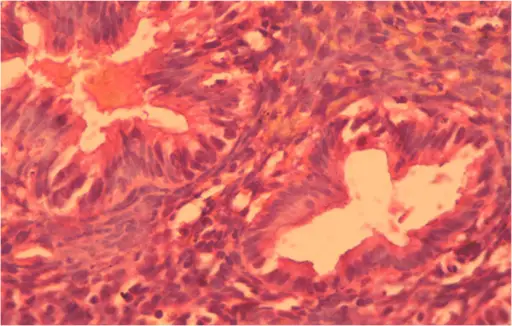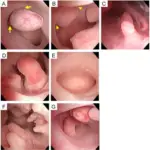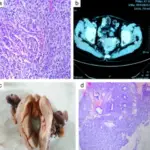Endometrial hyperplasia is a condition of the female reproductive system. The lining of the uterus endometrium becomes unusually thick because of having too many cells hyperplasia. It’s not cancer, but in certain women, it raises the risk of developing endometrial cancer, a type of uterine cancer
What is the Pathology of Endometrial Hyperplasia?
The pathology of endometrial hyperplasia is:
-Etiology: The cause of endometrial hyperplasia is excess estrogen without progesterone.
-Genes involved: K-ras,B-raf, Her2/neu, -catenin, AKT genes.
-Pathogenesis: The sequence of events that lead to endometrial hyperplasia are: If ovulation does not occur, progesterone is not made, and the lining is not shed. The endometrium may continue to grow in response to estrogen. The cells that make up the lining may crowd together and may become abnormal.
-Morphology: The morphology associated with endometrial hyperplasia shows Florid to pseudopolypoid endometrium.
-Histology: The histology associated with endometrial hyperplasia shows Reminiscent of normal proliferative endometrium with pseudostratified, mitotically active, elongated columnar cells.
How does Endometrial Hyperplasia Present?
Patients with endometrial hyperplasia typically in women with 50-54 years age and is rarely present in age 35 years or less. The symptoms, features, and clinical findings associated with endometrial hyperplasia include: bleeding after menopause, no periods premenopause, menstrual cycles shorter than 21 days, heavier or long lasting menstrual bleeding.
How is Endometrial Hyperplasia Diagnosed?
Endometrial hyperplasia is diagnosed by ultrasound to measure thickness, biopsy, dilation and curettage, hysteroscopy.
How is Endometrial Hyperplasia Treated?
Endometrial hyperplasia is treated by hysterectomy, hormonal therapy.
What is the Prognosis of Endometrial Hyperplasia?
The prognosis of endometrial hyperplasia is good. Atypical endometrial hyperplasia raises the risk of endometrial cancer and uterine cancer. The condition tends to occur during or after menopause.



